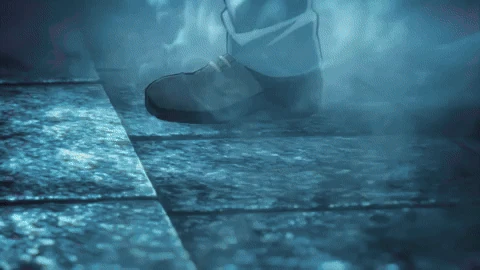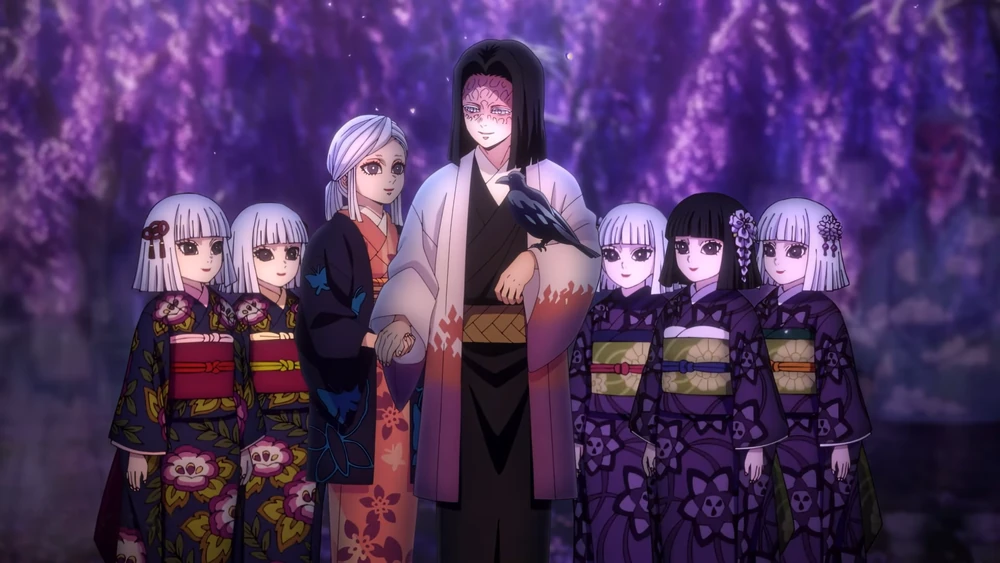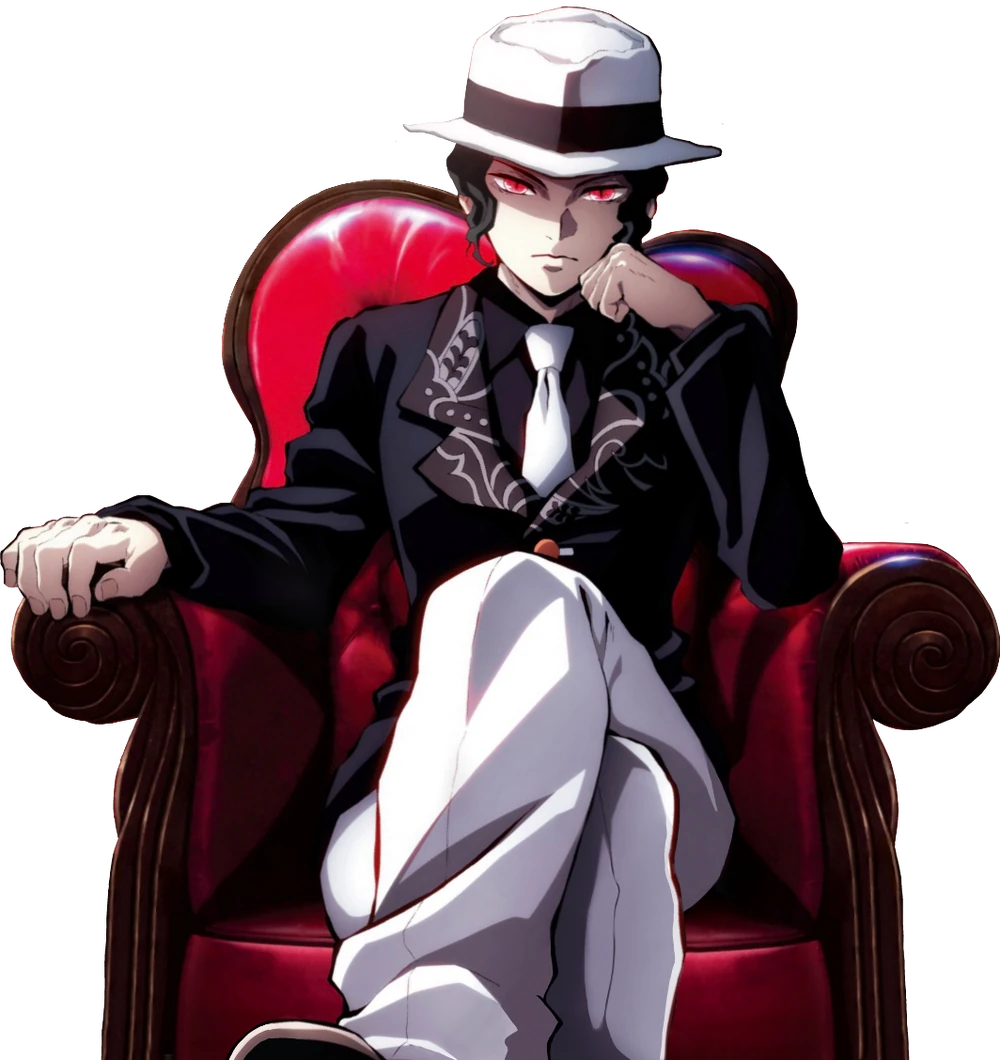How do you film the meeting of two gods? One, an immortal demon of perfect physical form; the other, a dying man who commands an army with nothing but his voice. In Demon Slayer, the first and only confrontation between Muzan Kibutsuji and Kagaya Ubuyashiki is not a battle of swords, but a masterclass in cinematic tension. While many analyses focus on their philosophical dialogue, the true genius of the scene lies in what is left unspoken.
This is not a summary of what was said. This is a deconstruction of what was shown and heard. By analyzing the deliberate choices in cinematography, sound design, and character aesthetics, we can uncover a silent, visual debate raging just beneath the surface—a duel of worlds told through the sound of a footstep and the fabric of a suit.
The Arrival of a Myth: Kagaya’s Perspective

The grand entrance: not just a display of power, but the culmination of a thousand-year wait, seen through Kagaya’s eyes. We have seen Muzan before, but never like this. His entrance into the Ubuyashiki Estate is a breathtaking piece of cinematic art. He emerges from a thick, ethereal mist, his form materializing as if from a dream. His walk is in slow motion, and his footsteps are amplified, each one landing with the deliberate, rhythmic beat of a patient heart.
This grandeur is not for our benefit. The most powerful interpretation is that we are not seeing Muzan as he is, but as Kagaya Ubuyashiki perceives him. He has spent his entire life, and his ancestors their entire lives, anticipating this single moment. The mist is the fog of history, the legend made real. The slow motion is Kagaya’s own heightened perception, where time itself warps around the arrival of his fated adversary. The footsteps like a heartbeat are a death knell, the sound of his own mortality. This is confirmed by Kagaya’s own words after the conversation: “I have said what I wanted to say to you for so long.” This was not a meeting; it was the fulfillment of a destiny, and the cinematography places us directly inside Kagaya’s mind as he witnesses it.
A Clash of Aesthetics: West vs. East, Individual vs. Collective
The most powerful visual statement in the entire scene is the costume design. It is a deliberate and profound clash of cultures and philosophies.

Kagaya Ubuyashiki, his wife Amane, and their children are all dressed in traditional Japanese kimonos and yukatas. Their clothing is steeped in history and representative of their roles within a collective unit. Kagaya’s attire is that of a respected, almost priestly figure. Their matching garments create a visual harmony that reinforces their unity. Their clothing is not about individual expression; it is about their shared identity and their place within a thousand-year-old tradition.

In stark contrast, Muzan Kibutsuji is dressed in a pristine, modern, Western-style suit and fedora. This choice is a profound statement of rejection. He is visually severing himself from the traditional Japan his enemies are fighting to protect. It makes him an anachronism—an ancient being adopting the attire of the newest global power. Furthermore, it is a form of camouflage. In the modernizing cities of Taisho-era Japan, this suit allows him to walk unseen among the very humans he despises, the ultimate expression of his contempt.
The Predator’s Curiosity: A Duel of Composure
This brings us to the central question of the scene: Why does Muzan, a being of immense power and impatience, listen to his dying arch-enemy for so long? The answer is a twisted form of respect. Not for Kagaya as a person—whom he mocks—but for the Ubuyashiki clan as an inexplicable obstacle.
For a thousand years, the Demon Slayer Corps has been the one variable Muzan cannot solve. He listens out of a profound, almost scientific curiosity. He is a god trying to comprehend the nature of an opposing faith. Kagaya’s unwavering belief in the “immortal will of humanity” is so alien to Muzan’s philosophy of the singular, perfect self that he is momentarily captivated.
This is reflected in the cinematography. The camera holds steady on Kagaya’s frail form, capturing his serene composure. His body is decaying, but his spirit is immovable. In contrast, Muzan is restless, his arrogance palpable. The scene is a visual duel between Muzan’s restless physical power and Kagaya’s profound spiritual stillness. Ultimately, the art direction tells us who the real monster is. Muzan, in his perfect human suit, is the one who is truly inhuman. Kagaya, with his decaying face, is the one who embodies the unbreakable, enduring spirit of humanity. The scene is a masterpiece, proving that in anime, how a character is dressed, how they sound, and where they stand can tell a story far more powerful than any words they speak.
All images are screenshots from their respective anime series or are in the public domain, and are used under Fair Use for the purpose of criticism and commentary. Sensei Square is an unofficial fan work and is not affiliated with the original copyright holders. © All rights reserved to their respective owners.

